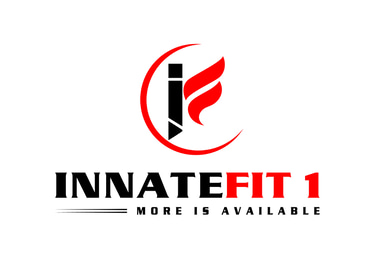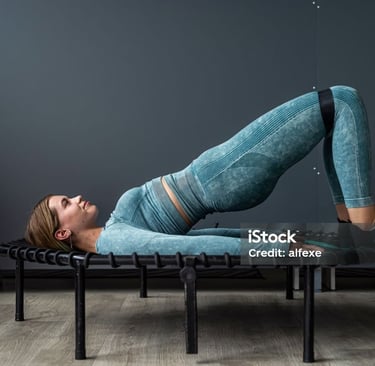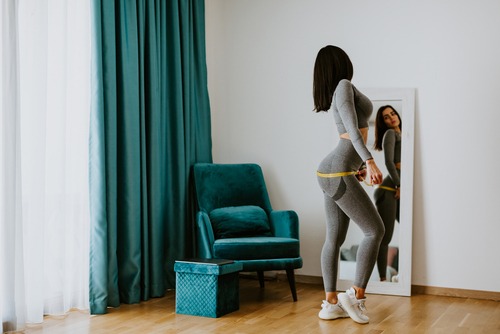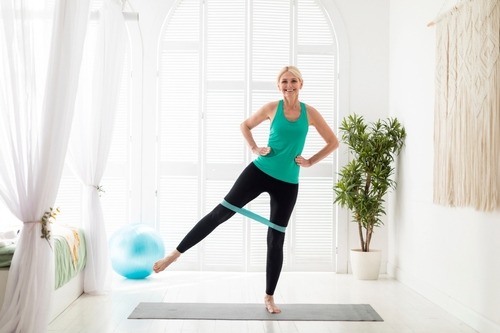Visit Innatefit1.com for exercise wear and equipment!!!
Best Resistance Bands for Squats at Home: A Women’s Guide to Stronger Glutes and Legs
A clear guide to the best resistance bands for squats at home—fabric vs. latex, sizing, setups, and an 8-week plan for stronger glutes.
WOMEN'S HEALTHGLUTE TRAININGWORKOUTSCONFIDENCE BUILDINGPERSONAL DEVELOPMENTFITNESS TIPSSTRENGTH TRAININGEQUIPMENT SUGGESTIONS
Joseph Battle
11/12/20255 min read
Why Bands Make Squats Better at Home
No rack? No problem. Resistance bands add load, stability, and glute activation to bodyweight squats without taking over your living room. They’re light, affordable, and versatile—perfect for building stronger legs and glutes with progressive overload when you don’t have barbells or machines.
Affiliate Disclaimer
This article may contain affiliate links, which means that if you choose to make a purchase through one of these links, I may earn a small commission—at no additional cost to you. I only recommend products or services that I genuinely believe can add value to your health, fitness, or overall well-being. These commissions help support the content I create and allow me to continue sharing free, high-quality information.
Key benefits for at-home training
Glute activation: Bands cue knees to track out, reducing knee cave and lighting up the side-glutes (glute med/min).
Joint-friendly resistance: Tension increases as you stand, so your knees and hips get more work where they’re strongest.
Space-efficient strength: One set of bands covers warm-ups, main sets, and accessories.
The 4 Band Types that Work Best for Squats
You don’t need all of them. Pick based on your goals, space, and comfort. Good Bands.
Short “glute” loop bands (hip circles)
Best for: Bodyweight squats, goblet squats, split squats, warm-ups.
Wear: Above knees for most, around ankles for more outer-glute demand.
Material: Fabric (grippier, comfy) or latex (snappier, cheaper).
41″ long power loop bands
Best for: Banded back-squat pattern (under feet + behind shoulders), front-squat pattern (under feet + across fronts of shoulders), band-anchored goblet squats.
Why: Offers true strength progression when you want heavier tension.
Tube bands with handles + door anchor
Best for: Assisted or resisted squats where you want an easy anchor (door).
Note: Great for beginners; quick setup for squat-to-press combos.
Figure-8 or hip-sling bands
Best for: Quick knee-out cueing and warm-up activation before heavier sets.
Fabric vs. Latex: Which Should You Choose?
Fabric glute bands
Pros: Don’t roll, comfy on skin, won’t tug hair, stable above knees.
Cons: Less “elastic snap,” big jumps between light/medium/heavy.
Latex glute bands
Pros: Smoother progression across many tensions; budget-friendly sets.
Cons: Can roll if narrow; may pull on skin; consider latex sensitivities.
Recommendation:
For most home squatters, start with a fabric glute loop (medium tension) for above-knee use.
Add one 41″ power band (medium) when you’re ready to load squats beyond bodyweight.
How to Pick Your Resistance Level
Use this quick check to choose the right tension for 8–12 quality reps:
Perform a set of 10 squats with the band you think fits (above-knee for loops; under-feet setup for long loops).
Ask yourself: Could I do 2–3 more reps with good form?
Yes: Slightly too light—go up one level.
No, I’m grinding early: Too heavy—step down one level.
Maybe one or two more: Perfect. That’s RPE 7–8, your sweet spot. Resistance Bands.
Approximate tension guide (at mid-range stretch)
Glute loop (fabric): Light ~15–25 lb, Medium ~25–40 lb, Heavy ~40–60 lb.
41″ power band: Light ~15–35 lb, Medium ~30–60 lb, Heavy ~50–85 lb.
(Exact tension varies by brand and stretch; use the RPE test above.)
Setups That Make Squats Feel Great (and safe)
Glute loop above knees (most common)
Stance hip-to-shoulder width.
“Screw feet into the floor” so knees track over 2nd–3rd toe.
Keep chest tall, ribs down, and sit between your hips—don’t fold at the waist.
Glute loop at ankles (advanced glute focus)
Slightly narrower stance.
Push knees out while keeping feet flat and arches strong.
41″ power band front-squat pattern
Stand on the band; bring the top across front shoulders (like a front rack).
Elbows slightly forward, upper back proud.
Think “knees forward + out” as you sit down, then drive the floor away.
Door-anchored tube band
Anchor high; face the door and hold handles at shoulders.
Sit into the squat while the band “pulls” you slightly forward—counter by bracing your core. Great posture cue.
Common Squat Mistakes with Bands (and quick fixes)
Knees collapsing in: Place loop above knees, press knees slightly out, and slow down the lowering phase (3 seconds).
Heels lifting: Widen stance a touch, shift weight mid-foot to heel, and exhale as you stand.
Lower-back pinch: Brace: “exhale, zip up the abs,” keep ribs stacked over pelvis, and stop 1–2 reps before form breaks.
Band rolling: Go wider fabric band or move placement slightly higher on the thigh.
8-week squat progression (2–3 days/week)
Goal: Stronger, more defined glutes and legs using minimal gear. Great Gear.
Weeks 1–2
Warm-up: 2 rounds—20s glute bridge hold, 10 bodyweight squats, 10 banded clams/side.
Main: Banded bodyweight squats (loop above knees) 3×12 (RPE 7).
Accessory: Split squats 2×10/leg (loop above knees), Banded hip hinge 2×12.
Weeks 3–4
Main: Banded goblet squat (hold a backpack/dumbbell) 4×10 (RPE 7–8).
Accessory: Lateral band walks 2×12/side, Slow eccentrics 2×8 (3-sec down).
Weeks 5–6
Main: 41″ power-band front-squat pattern 4×8 (RPE 8).
Accessory: Elevated heel banded squats 3×10, Banded hip thrust 3×12.
Weeks 7–8
Main: Strength-plus-burn finisher—
A) Power-band front squats 5×5 (RPE 8–9, rest 90s)
B) Loop-band pulse squats 3×20 (light loop, minimal rest)
Progression: When all sets feel like you had >3 reps left, increase band tension or add 2–3 reps/set.
Quick Banded Squat Workouts (10–15 minutes)
A) Glute-first circuit (no anchor)
Loop-band squats 3×15
Lateral walks 3×12/side
Squat pulses 3×20
Rest 30–45s; repeat 2–3 rounds.
B) Strength + stability (power band)
Power-band front squats 5×6–8
Iso wall-sit with loop above knees 3×30–45s
Rest 60–90s.
C) Travel-friendly EMOM (every minute on the minute, 10 min)
Odd minutes: 10–12 banded squats
Even minutes: 12 banded hip hinges or 10 split squats/leg
What to buy: A Simple, Reliable Starter Kit
If your audience wants a short shopping list (no brand loyalty needed):
Fabric glute loop set (light/medium/heavy). Medium will be the workhorse.
One 41″ power band (medium). Lets you progress load without dumbbells.
Tube band with handles + door anchor (optional). Easiest way to add variety.
Quality checklist (use this when comparing options)
Fabric loop width 2–3″ with anti-slip weave.
Stitched seams (no hard plastic junctions against skin).
Power band made from layered latex (better durability).
Door anchor with thick foam stop and reinforced stitching.
Sets that include clear tension labels (light/med/heavy) or color key.
Care, Comfort, and Hygiene
Wash fabric bands on cold; air-dry flat.
Wipe latex bands with a damp cloth; avoid direct sun and sharp edges.
Store rolled (not folded); check monthly for cracks or peeling.
Form Cues to Remember
“Feet screw in, knees track out, ribs stacked.”
“Sit between your hips, then drive the floor away.”
“Exhale as you stand; brace before you descend.”
FAQ
Are fabric bands stronger than latex? Often at similar size, yes. But feel differs. Choose by comfort and the RPE test.
Above knees or at ankles? Above knees for most squats; at ankles increases outer-glute demand but is harder to control.
How often to train squats? 2–3×/week works well for most. Keep one easier day for technique.
When to increase tension? When you finish all sets and still have >3 clean reps left, move up a level or add reps.
The Bottom Line
For women training at home, the best resistance bands for squats are the ones that let you progress safely, feel your glutes work, and stay consistent. Start with a fabric glute loop (medium) for stable, comfortable squats.
Add a 41″ power band when you’re ready to load up. Keep your form clean, increase tension gradually, and follow a simple plan. Strong legs and firm glutes don’t require a rack—just smart reps and the right bands.








